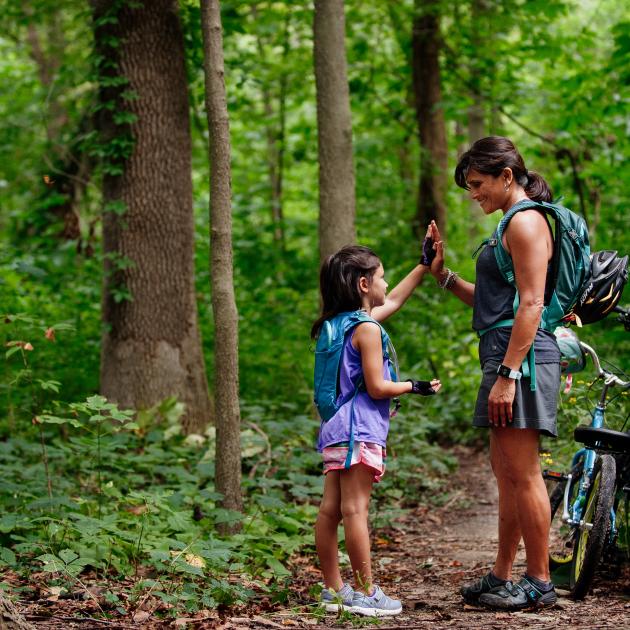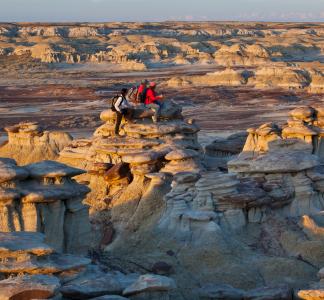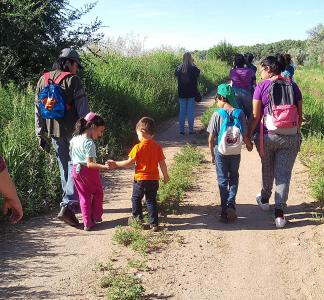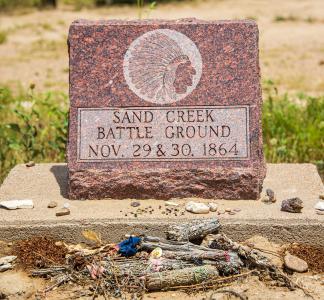Covid nature frenzy underscores need for equitable outdoor access
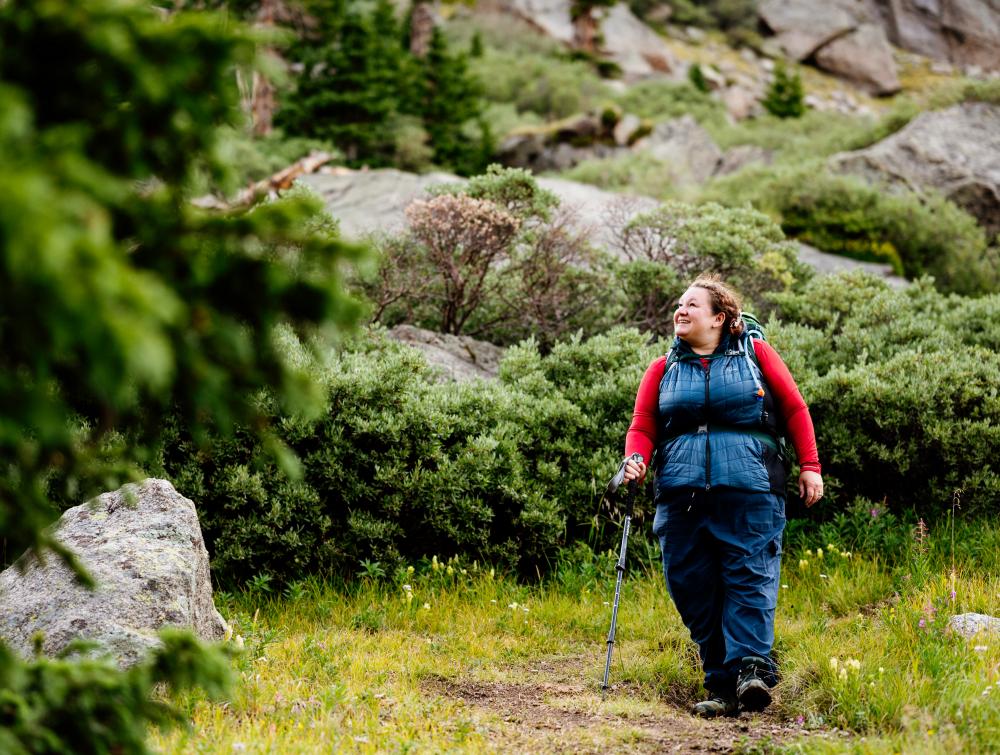
A hiker in Colorado
Michelle Craig
Record-breaking park attendance reminds us how we all need nature
Author: Eliza Boetsch
As COVID-19 vaccination efforts roll out across the country, pent up demand for outdoor adventure is causing attendance at some of our nation’s most popular parks and public lands to skyrocket.
Over the past year, Maine’s state parks have seen an unprecedented number of visitors, while visitations to state forests in North Carolina have doubled and tripled. Across the National Park system, campsite reservations are up 73% from 2019, and overwhelming crowds have forced Arches National Park to close its gates early nearly every day this summer.
Increased visits to public lands underscore the great desire and need that we all share to spend time outdoors. But not everyone has the time and resources to pack up the car and head out for a road trip. Millions of people would benefit from access to nature close to home, especially communities of color and low-income communities, as well as people with disabilities and those without cars, groups that face the greatest barriers to accessing greenspace and the health benefits that it provides.
“A lot of low-income families don’t always have vehicles, so they can’t always access greenspaces, and the ‘best looking’ and ‘most fun’ greenspaces tend to be focused in wealthier areas,” said Karyn Leung, Community Programs Coordinator at Tiny Trees Preschool in Seattle, Washington, a school that focuses on outdoor learning.
Many people are still left out of public lands
In the US, communities of color are three times more likely than white communities to live in nature-deprived areas, while 70% of low-income communities have less access to nature than the rest of the country. Limited greenspace in these communities, combined with factors like lack of access to transportation, means that many people are being left out of experiencing the benefits of public lands.
In the US, communities of color are three times more likely than white communities to live in nature-deprived areas, while 70% of low-income communities have less access to nature than the rest of the country.
“Parks are essential to our health, our civic engagement, and our long-term climate resilience,” said Rebecca Bear, President and CEO of Seattle Parks Foundation. “Over the last several years, funding for maintenance, capital projects, and recreation programs has decreased while demand and need has only increased, particularly during the pandemic… Layered on top of this is a 100 year history of redlining that has perpetuated inequity in our communities of color. To right the wrongs of history and address our impending climate crisis, our civic leaders need to come together and truly invest in greenspace as if our lives depend on it, because they do.”
One way that we can begin to address these inequities and ensure that everyone, regardless of income level, zip code, or access to a car, is able to enjoy the outdoors, is by improving access to greenspaces closest to home. Over the past year, a few states have been working to do just this. California dedicated 1 billion dollars to equitable outdoor access and Colorado created the Outdoor Equity Grant Program, which funds groups that increase outdoor access to underserved youth and their families. New Mexico recently doubled down on its efforts to increase equitable access to the outdoors by boosting the state’s Outdoor Equity Fund by $602,600 in its second year. In Washington state, lawmakers tripled the funding for the state’s No Child Left Inside program, which expands outdoor recreation and education opportunities for under-resourced communities.
The need for national outdoor equity legislation
While these state-level successes are an important step toward addressing a systemic problem, many states across the country have failed to address glaring outdoor access inequities. Millions of people in the U.S. still face barriers to getting out into nature, such as lack of nearby parks and greenspaces, limited transit opportunities, and economic barriers such as entrance fees. This equates to millions of people without access to the important benefits that public lands provide. Not only do greenspaces connect communities with opportunities for healthy outdoor activity, they also provide cooling benefits. This summer, communities across the country are struggling to adapt to climate change-induced heat waves. Greenspaces make communities more resilient to extreme heat by providing shady tree canopy and reducing urban heat islands that result from concrete-covered urban surfaces.
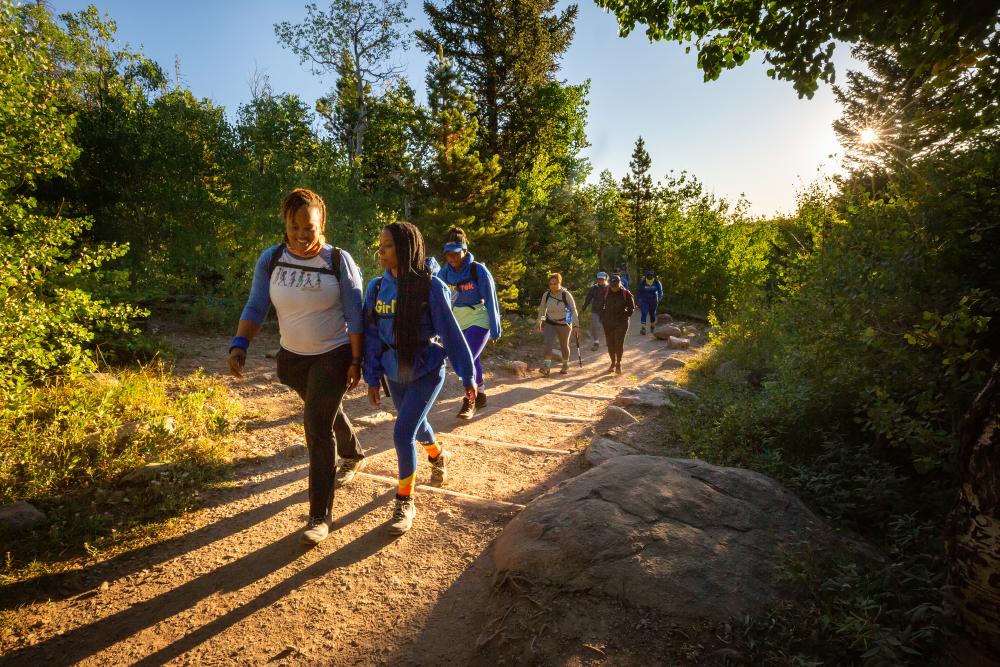
Rocky Mountain, CO
Eric Schuette
“Access to (outdoor) spaces should never be determined by one's identity or income level.” - Chris Liu, Outdoor Asian Washington
Right now, Congress has the opportunity to address outdoor inequities on a nationwide level by passing three key pieces of legislation that would improve access to nature for millions of people. The Parks Jobs and Equity Act would create a $500 million grant program to invest in local parks. The Outdoors for All Act would ensure funding for and make permanent the Outdoor Recreation Legacy Partnership (ORLP) grant, which funds park creation in densely populated areas that lack green space, and the Transit to Trails Act would establish a grant program to provide underserved communities with direct access to our public lands.
“Passing the Transit to Trails Act could change the landscape of access to the outdoors in Albuquerque and beyond,” said Rachel Swanteson-Franz, Albuquerque-based Urban to Wild Coordinator at The Wilderness Society. “New Mexico lacks state funding for transit, so federal funding that supports better connections to parks and brings more people into the outdoors is that much more important.” If passed, the Transit to Trails Act, The Parks Jobs and Equity Act and The Outdoors for All Act would be a first step towards achieving equitable outdoor access for all, while simultaneously making our nation’s most vulnerable communities more resilient to the climate crisis by ensuring that everyone has access to the cooling benefits of greenspace.
The issue of equitable outdoor access is multifaceted, and therefore requires comprehensive long-term solutions. Investing in public lands and parks for our nation’s most critically underserved communities is a good place to start.
New Mexico can lead the nation in getting all youth outdoors, if legislature acts
Bob Wick, BLM
Report: Albuquerque park access lacking for vulnerable communities, but expanded transit could help
Cecilia Beltran, USFWS
It’s time to own up to the racism and violence embedded in the names of parks and public lands
Kent Kanouse, Flickr
